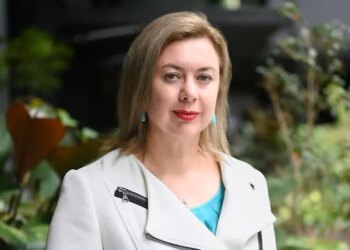ETF provider BetaShares recently released its 2022 BetaShares/Investment Trends ETF report which found that 1.9 million Australian investors now use ETFs in their portfolio.
The report surveyed more than 800 financial advisers and 2,466 current ETF investors between August and October 2022.
Despite the recent volatility in markets, the report found that 1.4 million existing ETF investors intend to increase their ETF allocation to ETFs in the next 12 months.
In terms of SMSF investors, the report found that the number of SMSFs holding ETFs has now grown to 400,000, an increase of around 30,000 from 2020.
The top two asset classes that SMSFs invest in through ETFs is international equities at 78 per cent and Australian equities at 72 per cent.
This was followed by thematic exposure at 28 per cent, Australian property also at 28 per cent and infrastructure at 22 per cent.
BetaShares senior investment strategist Cameron Gleeson said the number of SMSFs holding ETFs has steadily increased over the past few years.
“SMSFs were one of the early adopters of ETFs. At that point, SMSFs were attracted to the transparent, convenient and cost-effective nature of ETFs and used the popular investment vehicle to obtain exposure to more difficult to access asset classes, like international equities,” said Mr Gleeson.
“Fast forward to 2022, and more SMSFs than ever before are holding ETFs as they continue to take advantage of the inherent benefits of ETFs to build and grow their retirement nest egg.”
Mr Gleeson said SMSFs are now using ETFs for portfolio completion across all asset classes.
“For example, [they’re] replacing high-cost active unlisted funds in fixed income and using ETFs in place of direct ASX-listed stock holdings for greater diversification,” he explained.
“The choice of ETF exposures on offer has steadily increased to include asset classes like listed property, infrastructure, equity sectors and thematic exposures.”
BetaShares expects the number of SMSFs holding ETFs will continue to grow steadily in line with the growth from previous years, said Mr Gleeson, particularly as more investors of all types use ETFs to progress on their financial goals.
Across the Australian investor population more broadly, the report found that 230,000 Australians intend to start investing in ETFs for the first time in the next 12 months.
“Going into 2023, it appears as though investors are thinking more about overall cost and diversification within their portfolio. With these matters front of mind for investors and their financial advisers, we expect further growth in the adoption of ETFs next year,” said BetaShares chief executive Alex Vynokur.
“As a result, we expect net flows from investors to exceed $20 billion next year, while industry funds under management is on track to hit $150 billion, up from ~$130 billion” Mr Vynokur concluded.


